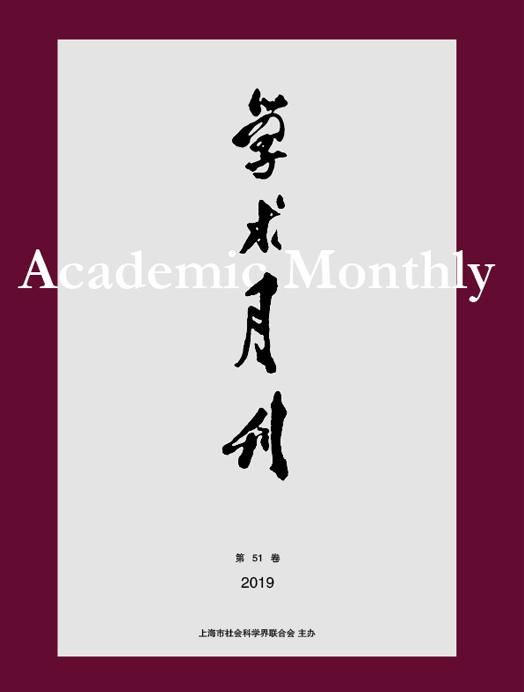Citation:
Pengcheng ZHENG. From the Taxes System to Market Mechanism: The Transformation of Mountain Land Property Rights in Yongfu County in Ming-Qing Period[J]. Academic Monthly, 2023, 55(3): 187-196.

From the Taxes System to Market Mechanism: The Transformation of Mountain Land Property Rights in Yongfu County in Ming-Qing Period
-
Abstract
The tax record and the boundary description are both important evidences in determining the property rights of mountain land. However, the importance of the two differs at different times. In the middle and late Ming period, tax reform diversified the livelihood model centred on forestry, making poll tax a fundamental basis of mountain land allocation in Lijia (“里甲”), while mountain tax became the legal certificate. In the early Qing period, with the practice of dividing the poll tax into land, Lijia lost its basis for allocating mountain land. As a result, the number of transactions and disputes increased. Against the backdrop of a booming forest economy, many family lineages strengthened joint control over the collective mountains through the prohibition convention for the restoration of the exclusivity of the mountain land boundary. The internal logic of this process of transformation is to move from the regulation of the tax system to the mechanism of the market. With the disappearance of the poll tax, the mountain tax is only used as a legal certificate. The mountain land transactions and the joint control of property rights by the family lineage mainly express the demands for economic rights. This change in the property rights of mountainous areas can be seen as the weakening of legal rights and the strengthening of economic rights.
-

-
References
-
Access
-
-
[1]
Zhenman ZHENG
. Forestry Economy and Local Society of Mountain Areasin Ming and Qing Periods. Academic Monthly,
2020, 52(2): 148-158.
-
[2]
. . Academic Monthly,
2016, 48(01): 38-48.
-
[3]
WANG Jinfeng
. . Academic Monthly,
2018, 50(7): 159-172.
-
[4]
Xianliang FENG
. State and Local Interaction: The Taxation Problem and Its Political Regulation in Jiashan County Society in the Late Ming Dynasty. Academic Monthly,
2023, 55(4): 181-195.
-
[5]
YOU Huansun
. . Academic Monthly,
2023, 55(9): 204-216.
-
[6]
,
. . Academic Monthly,
2017, 49(05): 40-47.
-
[7]
LI Guikui
. . Academic Monthly,
2023, 55(11): 208-216.
-
[8]
,
. . Academic Monthly,
2017, 49(09): 91-101.
-
[9]
ZHOU Pan
. From Identity to Contract: Community Dilemma in the Reform of Collective Property Rights System. Academic Monthly,
2023, 55(11): 123-135.
-
[10]
Jian WEI
. Large-scale Reallocation of Factors and the Lubrication of Public Ownership. Academic Monthly,
2020, 52(4): 45-54.
-
[11]
,
. . Academic Monthly,
2016, 48(03): 57-65.
-
[12]
,
. . Academic Monthly,
2016, 48(06): 68-75.
-
[13]
. . Academic Monthly,
2017, 49(07): 144-156.
-
[14]
Shiye TIAN
, Ping LI
. Changes of Rural Land Property Rights System in China from the Perspective of Development. Academic Monthly,
2021, 53(12): 74-84.
-
[15]
Xueyang CHENG
. Rebuilding Land Property Rights: The Basic Experience and Direction of Land System Reform in China. Academic Monthly,
2020, 52(4): 98-108.
-
[16]
. . Academic Monthly,
2017, 49(10): 114-127.
-
[17]
Zongqi CAI
. The Ming-Qing Theories of Literary Creation Centered on the Yi (Creative Conception). Academic Monthly,
2023, 55(3): 151-161.
-
[18]
Ni Yuping
. . Academic Monthly,
2018, 50(9): 177-184.
-
[19]
Junnan LAI
. Governance of Deed Tax at the Local Level of Qing’s Sichuan: with Particular Attention to Deed Tax Litigations in Nanbu County. Academic Monthly,
2020, 52(10): 100-115.
-
[20]
SU Li
. . Academic Monthly,
2018, 50(7): 99-118.
-
-



 沪公网安备 31010102003103号
沪公网安备 31010102003103号 DownLoad:
DownLoad: